
To the Prague lecture of Christian Kerez
Ten years ago, Kruh managed to attract a number of distinguished Swiss creators to Prague. At that time, students of Šik, leading engineers, and esteemed legends came. This year, Kruh successfully invited several professors from the architecture faculty of ETH Zurich to the Czech Republic in collaboration with the Swiss Federal Institute of Technology. Over the course of six evenings, we will be introduced to ten personalities from D-Arch.
The entire cycle was opened by Zurich architect Christian Kerez on the first Thursday of March, who designed the Honda car showroom in Šik's studio before graduating from ETH, where a certain contradiction was felt between the Japanese car manufacturer and the archetypal barn in the suburbs of Zurich. Kerez is not a typical Šik's protégé. Perhaps he would like to be one, but the fact that he predominantly designs in places that lack a strong spirit makes working with context more challenging for him. Satellite suburbs or anonymous Asian cities do not offer him inspiration, and thus the architect must embark on a path against the existing place with good intentions.
With the first spring lecture, Kruh returned to the main auditorium of the Faculty of Law at Charles University after a long time. The last lecture held here was in April 2005 by Meinrad Morger, who collaborated with Christian Kerez on a museum project in Vaduz. However, Kerez omitted his early projects from the 90s, when, alongside the Basel duo Morger&Degelo, he also collaborated with Rudolf Fontana in the heart of Graubünden, and was the first to present a house for his mother in a quiet residential area in the north of Zurich. In a location burdened by various regulations, he managed to design a concrete building comprising five apartments. The purity of the entire design is easier to grasp due to the absence of details. Only bare concrete walls and large window panes with views of the surrounding nature.
During his Ljubljana lecture in June 2008, Kerez admitted that he is not skilled in details, so he prefers not to design them at all. His buildings are stripped of details, leaving a pure enchantment with construction. A similar line of thinking can be seen in most of his designs, such as a duplex with a single wall that also arose on the slopes above Lake Zurich. However, behind the simple idea lies weeks of diligent searching for shape across dozens of variants and half a year of refining structural details so that the house ultimately appears as merely an enlarged model made of cardboard. Behind the resulting impression of simplicity lies hard work in the studio and on the construction site.
After completing these houses, Kerez received several similar offers, but instead of repeating himself, he preferred to pursue new challenges. One such project was a house with three apartments in Thalwil, which he completed last year. The only valuable element in the heterogeneous residential district was the view of the lake, which he subordinated everything to. A similar situation awaited Kerez in Prague's Břevnov, where in the average satellite settlement, the most valuable aspect is likely the view of the Hradčany panorama. The unconventional circular layout reflects the character of a client craving for permanent attention. Given that the Okamura brothers sat in the front row, and Kerez announced the title of his lecture as “House for Tomio Okamura and other projects”, the impression of a public lecture dissipated.
Kerez's experimental approach does not conform to the traditional image of contemporary Swiss architecture. The architect often goes against municipal regulations, engineering recommendations, constantly searching for new paths that he himself will not repeat, and which no one else has the courage to follow. In the March issue of Japanese A+U, there is an interview with Kerez titled "Object of Desire", the title suggesting what drives him forward. Kerez's experimental nature fits best in the Land of the Rising Sun, so it is no wonder that he found his Prague client there.
Two small tips at the end:
1. The fact that contemporary architecture in Switzerland can offer more faces is evidenced by the author exhibition of the moderate work of Gion A. Caminada in the Czech Budějovice Gallery of Contemporary Art, which curator Michal Škoda prepared for this May.
2. The first cycle of Swiss lectures was concluded by Kruh in November 2005 with the Ticinese legend Luigi Snozzi, whom you can meet this Saturday at the conference ex-centric in the newly reconstructed Liberec baths.
The entire cycle was opened by Zurich architect Christian Kerez on the first Thursday of March, who designed the Honda car showroom in Šik's studio before graduating from ETH, where a certain contradiction was felt between the Japanese car manufacturer and the archetypal barn in the suburbs of Zurich. Kerez is not a typical Šik's protégé. Perhaps he would like to be one, but the fact that he predominantly designs in places that lack a strong spirit makes working with context more challenging for him. Satellite suburbs or anonymous Asian cities do not offer him inspiration, and thus the architect must embark on a path against the existing place with good intentions.
With the first spring lecture, Kruh returned to the main auditorium of the Faculty of Law at Charles University after a long time. The last lecture held here was in April 2005 by Meinrad Morger, who collaborated with Christian Kerez on a museum project in Vaduz. However, Kerez omitted his early projects from the 90s, when, alongside the Basel duo Morger&Degelo, he also collaborated with Rudolf Fontana in the heart of Graubünden, and was the first to present a house for his mother in a quiet residential area in the north of Zurich. In a location burdened by various regulations, he managed to design a concrete building comprising five apartments. The purity of the entire design is easier to grasp due to the absence of details. Only bare concrete walls and large window panes with views of the surrounding nature.
During his Ljubljana lecture in June 2008, Kerez admitted that he is not skilled in details, so he prefers not to design them at all. His buildings are stripped of details, leaving a pure enchantment with construction. A similar line of thinking can be seen in most of his designs, such as a duplex with a single wall that also arose on the slopes above Lake Zurich. However, behind the simple idea lies weeks of diligent searching for shape across dozens of variants and half a year of refining structural details so that the house ultimately appears as merely an enlarged model made of cardboard. Behind the resulting impression of simplicity lies hard work in the studio and on the construction site.
After completing these houses, Kerez received several similar offers, but instead of repeating himself, he preferred to pursue new challenges. One such project was a house with three apartments in Thalwil, which he completed last year. The only valuable element in the heterogeneous residential district was the view of the lake, which he subordinated everything to. A similar situation awaited Kerez in Prague's Břevnov, where in the average satellite settlement, the most valuable aspect is likely the view of the Hradčany panorama. The unconventional circular layout reflects the character of a client craving for permanent attention. Given that the Okamura brothers sat in the front row, and Kerez announced the title of his lecture as “House for Tomio Okamura and other projects”, the impression of a public lecture dissipated.
Kerez's experimental approach does not conform to the traditional image of contemporary Swiss architecture. The architect often goes against municipal regulations, engineering recommendations, constantly searching for new paths that he himself will not repeat, and which no one else has the courage to follow. In the March issue of Japanese A+U, there is an interview with Kerez titled "Object of Desire", the title suggesting what drives him forward. Kerez's experimental nature fits best in the Land of the Rising Sun, so it is no wonder that he found his Prague client there.
Two small tips at the end:
1. The fact that contemporary architecture in Switzerland can offer more faces is evidenced by the author exhibition of the moderate work of Gion A. Caminada in the Czech Budějovice Gallery of Contemporary Art, which curator Michal Škoda prepared for this May.
2. The first cycle of Swiss lectures was concluded by Kruh in November 2005 with the Ticinese legend Luigi Snozzi, whom you can meet this Saturday at the conference ex-centric in the newly reconstructed Liberec baths.
The English translation is powered by AI tool. Switch to Czech to view the original text source.
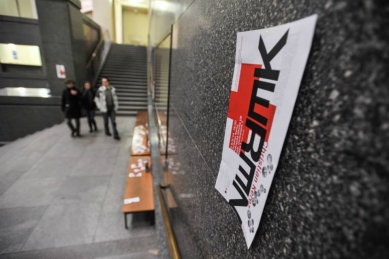
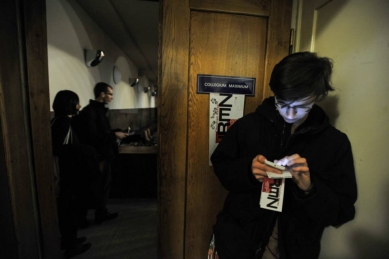
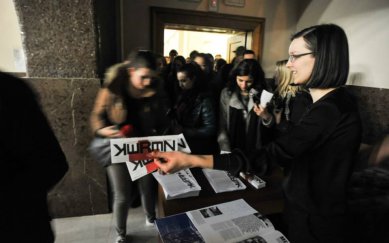
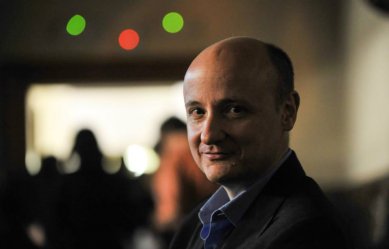

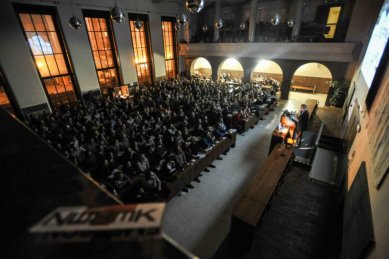

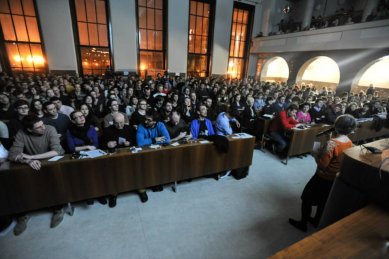
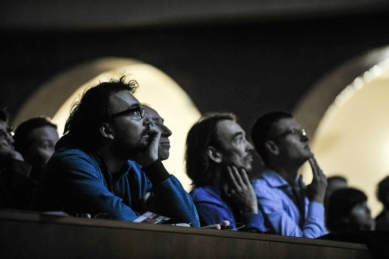
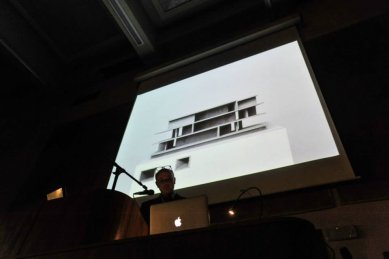
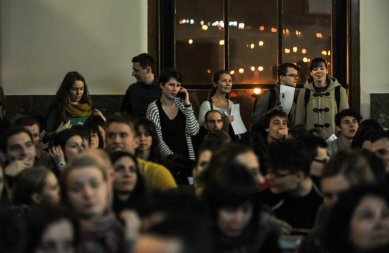

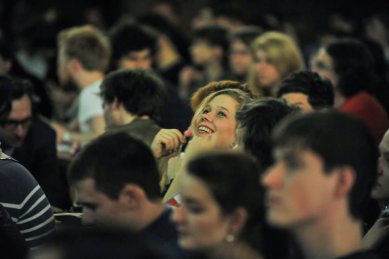
0 comments
add comment
Related articles
1
27.05.2014 | Insights from the working group with Fabio Gramazio and Toni Kotnik
0
16.03.2014 | Message from the Circle regarding Christian Kerez's lecture
0
12.03.2014 | Interview with Christian Kerez
0
06.03.2014 | kruh spring 2014: Christian Kerez
0
23.10.2013 | To the lecture of Miroslav Šik in České Budějovice












